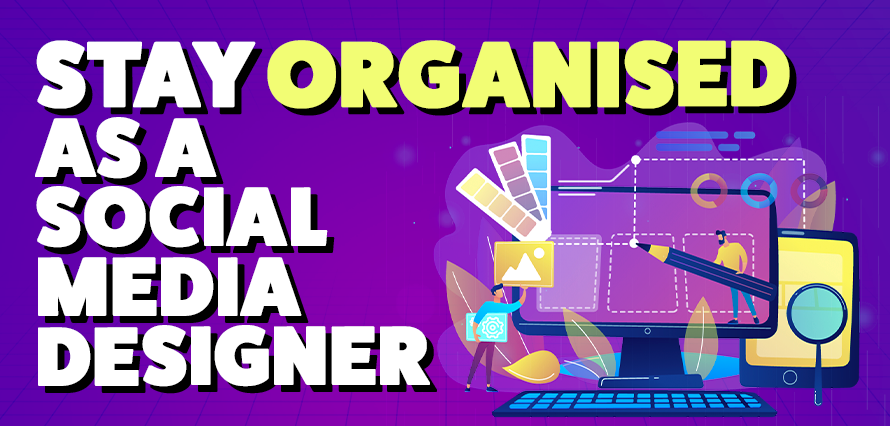November 4, 2025

If you’re a graphic designer working in social media, you already know the chaos: ten clients, five deadlines, three content calendars, and one folder called “Final_final_USE_THIS_ONE_really.png.” Yeah, we’ve all been there.
But there are a few habits that can help you stay organised, save time, and keep everything running smoothly, even when juggling multiple clients at once.
Folders
The best place to start is with a folder system that actually makes sense. Every client gets their own master folder, split by campaign or month
Something like:
ClientName → 2025 Campaigns → March Posts.
Try to always keep the same few folders inside:
Output (Final) – export-ready posts
Used – brand kits, logos, fonts, images or videos
Working files – with Templates and linked Libraries
Having that consistency means you don’t waste time digging through random folders every time someone says, “Can you resend that banner from last month?”
Naming
A big part of staying organised is naming your files properly. It sounds small, but it’s a lifesaver.
Something like:
ClientName_Campaign_Date_Version — for example, AryaGroup_SummerLaunch_2025-05-15_v02.png.
It keeps things clean, searchable, and easy to track. Much better than final_FINAL_reallythisone.png (which we all secretly have somewhere). When it comes to sharing and getting feedback, skip the endless email threads. Use tools like Google Drive, Dropbox, Figma, or Frame.io. These platforms let you keep all your comments directly on the design, so feedback is clear and nothing gets lost in translation. It makes collaboration feel much smoother.
Templates
Keep ready to modify templates. Don’t rebuild the wheel every time a new campaign drops. Having ready-made layouts for things like quotes, carousels, and stories helps me jump straight into creative work. If you’re part of a team, a shared template library ensures everyone sticks to the same styles and keeps branding consistent. Check also the blogs “Template Like a Pro” and “Design Time: Template Edition” for more information on this subject.
Use your planner
Another thing that helps massively is keeping a design calendar that actually gets used. Whether it’s a Trello board, a Notion dashboard, or just a shared Google Sheet: seeing your deadlines and upcoming projects laid out clearly makes planning so much easier. It helps you batch similar work together and stay in a creative rhythm instead of constantly switching gears.
Back up everything
Please, keep your files updated and backed up. It’s not glamorous advice, but it’s the kind that saves you from heartbreak. Cloud syncing with Adobe CC, Figma, or Google Drive means you never lose work if your laptop suddenly dies (it happens). Always update shared files after every revision so the latest version is easy for everyone to find.
Switching between different clients can be a mental workout, especially when their brands have completely different tones.
What may help is grouping similar work together, like handling all corporate designs in one session, then tackling fun, playful brands later. It keeps the brain in the right creative zone. And yes, breaks matter. Walk away from your desk, stretch, and grab a coffee. It really helps reset your focus.
When your files are neat, your folders consistent, and your templates ready, you can spend less time searching and more time designing. It’s not about being perfect; it’s about giving yourself space to do your best creative work. Future-you will thank you for it. At the end of the day, being organised doesn’t kill creativity; it fuels it. Get in touch if you want to share your techniques to stay ahead of the busy design work.